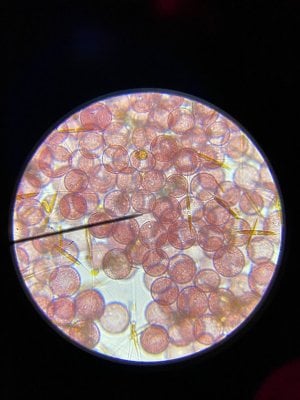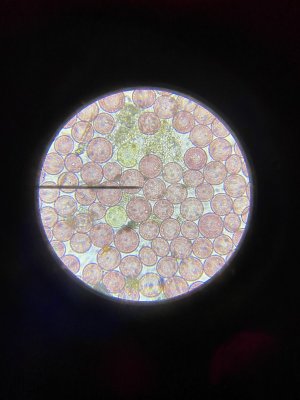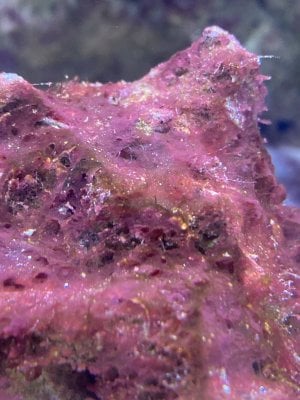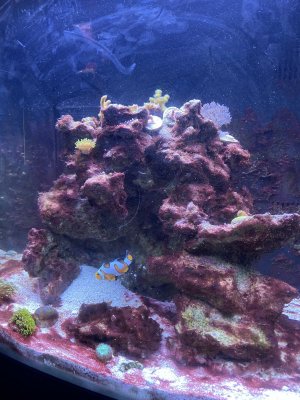- Joined
- Mar 20, 2020
- Messages
- 125
- Reaction score
- 43
Hello, I am having a takeover of this unknown organism. It was die to me using tap water to make my saltwater. I have now been using ro/di water for 3 weeks. 2 weeks now with a much higher quality salt.
I have taken some of the red stuff off and put it under a microscope. I can’t seem to identify if it is Cyanobacteria or dinoflagellates. It doesn’t look like either to me lol. Was expecting long stands of Cyanobacteria or the usual spikes of dinos. Any help would be fine. I assume the orange things are pennate diatoms.
Thank you!



I have taken some of the red stuff off and put it under a microscope. I can’t seem to identify if it is Cyanobacteria or dinoflagellates. It doesn’t look like either to me lol. Was expecting long stands of Cyanobacteria or the usual spikes of dinos. Any help would be fine. I assume the orange things are pennate diatoms.
Thank you!






















